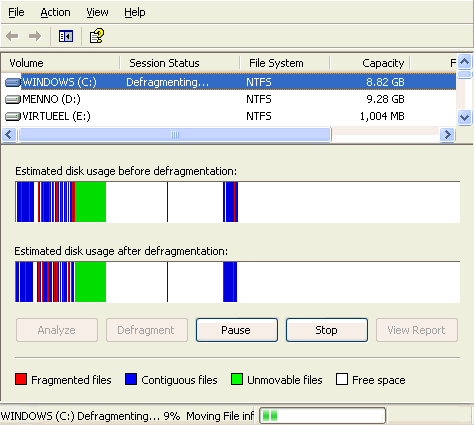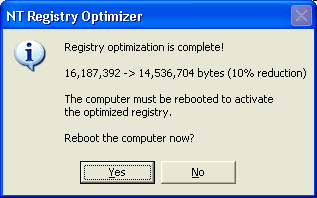
Before imaging your Windows partition, it's wise to defrag your hard disk (C: partition). Defragmenting results in nicely arranged files, which are not spread in pieces all over the hard disk. After defragmenting your hard disk has faster access to the files, which results in a faster Windows. Before you start defragmenting your hard disk, make sure there are no temporary files left on your hard disk, check the page about deleting unnecessary files first (this will eventually result in a faster imaging process and a smaller system backup).
DELETING UNNECESSARY FILESIf you didn't read the page about deleting
unnecessary files, at least remove the following files in all user accounts: TIP: You can bypass the Recycle bin, by pressing SHIFT-DEL! Most files are system files and/or hidden, so make sure you can see those type of files in the Windows Explorer (Tools, Folder Options, tab View, enable Display the content of system folders, enable Show hidden files and folders, disable Hide extensions for known file types and disable Hide protected operating system files). |
The defragmentation tool is started by Start, All Programs, Accessories, System tools, Disk Defragmenter. You will see the screen below. Select a volume, your C: partition, and click Analyze followed by Defragment to start the defragmentation process (you can skip the Analyze step). You have to defrag each volume separately, furthermore there are no settings possible. The red parts indicate the fragmented files, the blue parts the defragmented files. The green parts are irremovable system files, which are discussed below.

|
|
The green parts won't be defragmented, these are the virtual memory (Control Panel, System, tab Advanced, button Performance Settings, tab Advanced, button Change) and the hibernation file (Control Panel, Power Options, tab Hibernate), discussed on the page about deleting unnecessary files. Defragmenting those system files is not possible with the Windows Disk Defragmenter tool.
On the page about cleaning the Windows registry, I already wrote about defragmenting the registry files. Here I would like to repeat this information. Spoken normally, you can diminish the registry by at least 10 percent. Registry defragmenting doesn't delete anything, it just makes a smaller registry with the same information. This saves a lot of memory, which is important for the performance of your system.
Freeware utilities like NT Registry Optimizer (download: www.snapfiles.com/get/ntregopt.html) and RegDefrag (download: www.regdefrag.com) are very useful tools to defrag the registry. First the application calculates the possible registry size reduction, which will be realized after a reboot. In this case the registry will be reduced by 10% (click Yes to reboot).

© 2001-2022 - Menno Schoone - SchoonePC - Rotterdam - The Netherlands